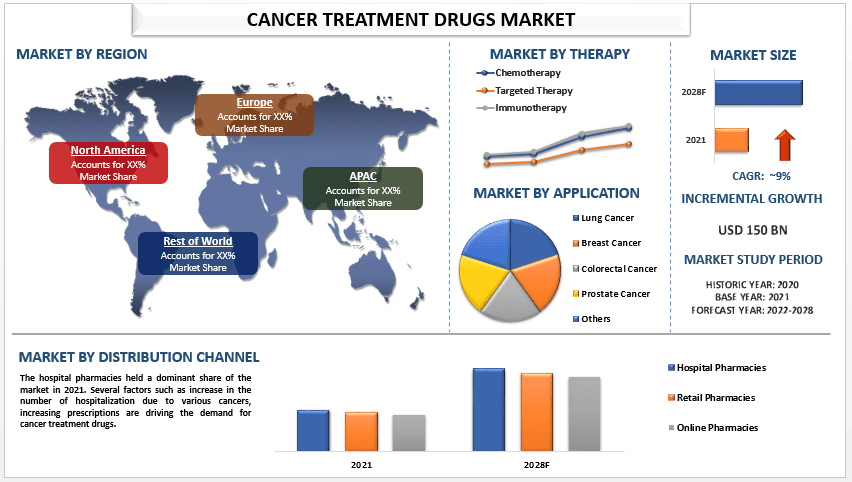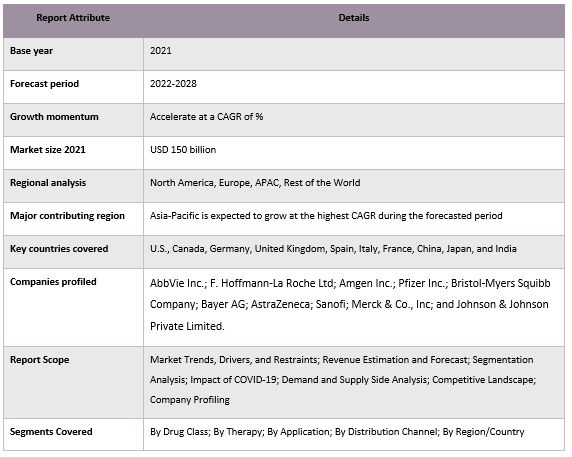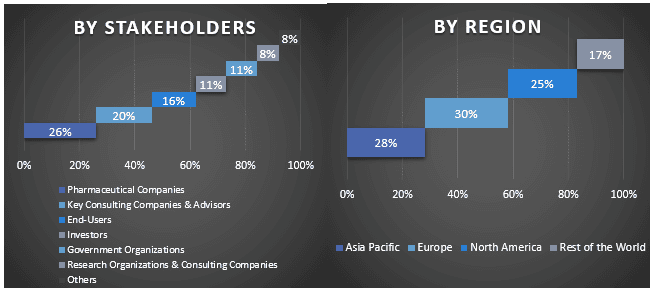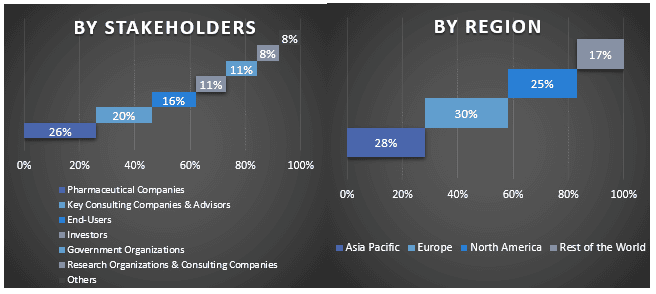Emphasis on Drug Class {Cytotoxic Drugs (Alkylating Agents, Antimetabolites, and Others), Targeted Drugs (Monoclonal Antibodies, and Others), Hormonal Drugs, and Others}; Therapy (Chemotherapy, Immunotherapy, and Targeted Therapy); Indication (Lung Cancer, Breast Cancer, Colorectal Cancer, Prostate Cancer, and Others); Distribution Channel (Hospital Pharmacies, Retail Pharmacies, and Online Pharmacies); Region/Country

The cancer treatment drugs market is expected to grow at a strong CAGR of around 9% during the forecast period owing to the surge in the incidence of cancers, rising research and development activities for the development of novel cancer treatment drugs, and the development of a novel pipeline of cancer drugs. Moreover, the presence of various government and non-government organizations that aim to enhance awareness and promote research is also propelling market growth. For instance, Cancer Research Institute funded more than 120 clinical trials and invested around USD 474 million in research in 2020. In addition to this, the increasing funding from government organizations for cancer-related searches is also driving the cancer treatment drugs market. For instance, in June 2022, a group of Stanford scientists received funding of USD 13 million from Cancer Grand Challenges, a funding initiative by Cancer Research UK and the U.S. National Cancer Institute. This funding is awarded for the development of next-generation immunotherapies, the study of extrachromosomal DNA, and the investigation of early-stage malignancies.
Some of the major players operating in the market include AbbVie Inc.; F. Hoffmann-La Roche Ltd; Amgen Inc.; Pfizer Inc.; Bristol-Myers Squibb Company; Bayer AG; AstraZeneca; Sanofi; Merck & Co., Inc; and Johnson & Johnson Private Limited. Several M&As along with partnerships have been undertaken by these players to facilitate customers with hi-tech and innovative products/technologies.
Insights Presented in the Report
“Amongst therapy, the targeted therapy segment held a significant share of the market in 2021”
Based on therapy, the market is categorized into chemotherapy, immunotherapy, and targeted therapy. The targeted therapy segment held a significant share of the market in 2021 due to its small size, high efficiency, and specificity toward cancer cells. Moreover, researchers are also evaluating the role of targeted therapy in combination with other cancer-targeting regimens to enhance their efficacy. For instance, in June 2021, Exelixis announced clinical trial collaboration with Bristol Myers Squibb to evaluate the safety, tolerability and efficacy of XL092, Exelixis’ novel next-generation tyrosine kinase inhibitor (TKI), in combination with: nivolumab (OPDIVO®); nivolumab and ipilimumab (YERVOY®); and nivolumab and bempegaldesleukin.
“Amongst indication, the breast cancer category to grow with high CAGR during the forecast period”
By indication, the market is segmented into lung cancer, breast cancer, colorectal cancer, prostate cancer, and others. The breast cancer segment is anticipated to grow with significant CAGR during the forecast period due to a significant rise in the prevalence of breast cancer. According to Globocan, in 2020, about 2,261,419 new breast cancer cases were reported worldwide, contributing to about 11.7% of the total cancer cases. In addition, the increasing focus of market players on the development of novel breast cancer drugs is also driving the market growth during the forthcoming years. For instance, in July 2021, Arvinas Inc. and Pfizer Inc. collaborated to develop and commercialize ARV-471, an investigational oral PROTAC (PROteolysis TArgeting Chimera) estrogen receptor protein degrader. Such factors potentially drive the demand for the adoption of breast cancer therapy worldwide.
Cancer Treatment Drugs Market Report Coverage

“Amongst distribution channel, the hospital pharmacies segment held a dominant share of the market in 2021”
Based on distribution channel, the market is segmented into hospital pharmacies, retail pharmacies, and online pharmacies. The hospital pharmacies held a dominant share of the market in 2021. Several factors such as increase in the number of hospitalization due to various cancers, increasing prescriptions are driving the demand for cancer treatment drugs.
“APAC to grow with high CAGR during the forecast period”
APAC is expected to grow with the highest CAGR during the forecast period due to the surge in the prevalence of cancers, rising government initiatives for cancer awareness, and surge in patient assistance programs. Furthermore, the advancements in the treatment of cancers with latest product approvals and launches drives the growth of the market. For instance, in August 2022, AstraZeneca India has received a Drugs Controller General of India (DCGI) approval to market its drug Lynparza (Olaparib) as a monotherapy for the adjuvant treatment of adult patients with BRCA-mutated HER2- negative high-risk early breast cancer. Therefore, owing to the aforementioned factors, the studied market is anticipated to witness growth over the analysis period.
Reasons to buy this report:
Customization Options:
The global cancer treatment drugs market can further be customized as per the requirement or any other market segment. Besides this, UMI understands that you may have your own business needs, hence feel free to connect with us to get a report that completely suits your requirements.
1. Market Introduction
2. Research Methodology Or Assumption
3. Market Synopsis
4. Executive Summary
5. Impact Of Covid-19 On The Cancer Treatment Drugs Market
6. Cancer Treatment Drugs Market Revenue (usd Bn), 2020-2028f
7. Market Insights By Drug Class
8. Market Insights By Therapy
9. Market Insights By Indication
10. Market Insights By Distribution Channel
11. Market Insights By Region
12. Cancer Treatment Drugs Market Dynamics
13. Cancer Treatment Drugs Market Opportunities
14. Cancer Treatment Drugs Market Trends
15. Demand And Supply-side Analysis
16. Value Chain Analysis
17. Competitive Scenario
18. Company Profiled
19. Disclaimer
Research Methodology for the Cancer Treatment Drugs Market Analysis (2022-2028)
Analyzing the historical market, estimating the current market, and forecasting the future market of the global cancer treatment drugs market were the three major steps undertaken to create and analyze the adoption of cancer treatment drugs in major regions globally. Exhaustive secondary research was conducted to collect the historical market numbers and estimate the current market size. Secondly, to validate these insights, numerous findings and assumptions were taken into consideration. Moreover, exhaustive primary interviews were also conducted, with industry experts across the value chain of the global cancer treatment drugs market. Post assumption and validation of market numbers through primary interviews, we employed a top-down/bottom-up approach to forecasting the complete market size. Thereafter, market breakdown and data triangulation methods were adopted to estimate and analyze the market size of segments and sub-segments of the industry pertains to. Detailed methodology is explained below:
Analysis of Historical Market Size
Step 1: In-Depth Study of Secondary Sources:
Detail secondary study was conducted to obtain the historical market size of the cancer treatment drugs market through company internal sources such as annual reports & financial statements, performance presentations, press releases, etc., and external sources including journals, news & articles, government publications, competitor publications, sector reports, third-party database, and other credible publications.
Step 2: Market Segmentation:
After obtaining the historical market size of the cancer treatment drugs market, we conducted a detailed secondary analysis to gather historical market insights and share for different segments & sub-segments for major regions. Major segments are included in the report as drug class, therapy, indication, and distribution channel. Further country-level analyses were conducted to evaluate the overall adoption of testing models in that region.
Step 3: Factor Analysis:
After acquiring the historical market size of different segments and sub-segments, we conducted a detailed factor analysis to estimate the current market size of the cancer treatment drugs market. Further, we conducted factor analysis using dependent and independent variables such as drug class, therapy, indication, and distribution channel of the cancer treatment drugs market. A thorough analysis was conducted for demand and supply-side scenarios considering top partnerships, mergers and acquisitions, business expansion, and product launches in the cancer treatment drugs market sector across the globe.
Current Market Size Estimate & Forecast
Current Market Sizing: Based on actionable insights from the above 3 steps, we arrived at the current market size, key players in the global cancer treatment drugs market, and market shares of the segments. All the required percentage shares split, and market breakdowns were determined using the above-mentioned secondary approach and were verified through primary interviews.
Estimation & Forecasting: For market estimation and forecast, weights were assigned to different factors including drivers & trends, restraints, and opportunities available for the stakeholders. After analyzing these factors, relevant forecasting techniques i.e., the top-down/bottom-up approach were applied to arrive at the market forecast for 2028 for different segments and sub-segments across the major markets globally. The research methodology adopted to estimate the market size encompasses:
Market Size and Share Validation
Primary Research: In-depth interviews were conducted with the Key Opinion Leaders (KOLs) including Top Level Executives (CXO/VPs, Sales Head, Marketing Head, Operational Head, Regional Head, Country Head, etc.) across major regions. Primary research findings were then summarized, and statistical analysis was performed to prove the stated hypothesis. Inputs from primary research were consolidated with secondary findings, hence turning information into actionable insights.
Split of Primary Participants in Different Regions

Market Engineering
The data triangulation technique was employed to complete the overall market estimation and to arrive at precise statistical numbers for each segment and sub-segment of the global cancer treatment drugs market. data was split into several segments & sub-segments post studying various parameters and trends in the areas of the drug class, therapy, indication, and distribution channel in the global cancer treatment drugs market.
The main objective of the Global Cancer Treatment Drugs Market Study
The current & future market trends of the global cancer treatment drugs market were pinpointed in the study. Investors can gain strategic insights to base their discretion for investments on the qualitative and quantitative analysis performed in the study. Current and future market trends determined the overall attractiveness of the market at a regional level, providing a platform for the industrial participant to exploit the untapped market to benefit from a first-mover advantage. Other quantitative goals of the studies include:

Customers who bought this item also bought